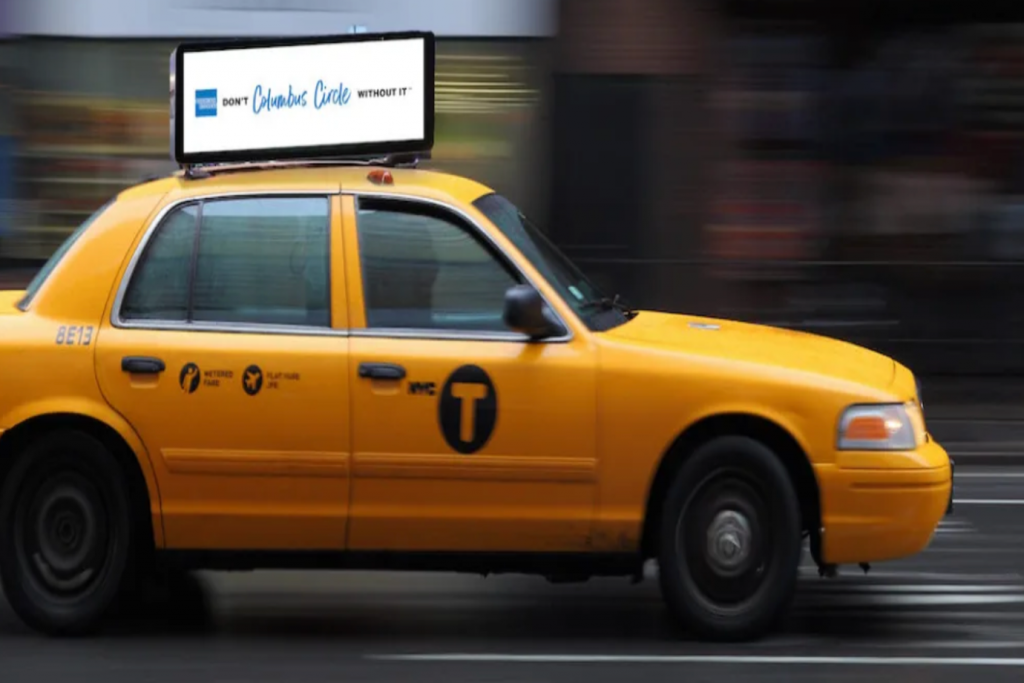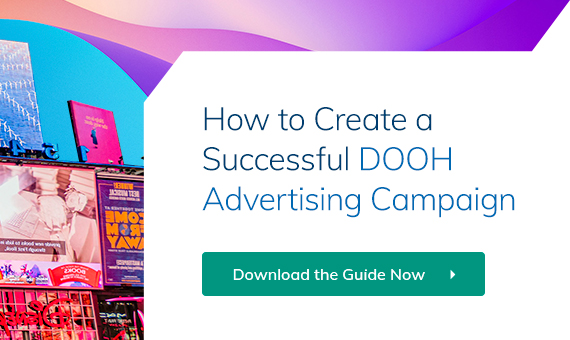In today’s fast-paced world, one of the most effective, reliable, and impactful ways to reach your target audience is with transit advertising.
In simple terms, transit advertising is an advertising strategy in which advertisers place their ads on and in public transportation vehicles and locations. It includes bus advertising and ads at bus stations, advertising on subway cars and in subway stations, in taxi cabs, and in planes and at airports.

(Image source: topmediaadvertising.co.uk)
Getting started with transit advertising couldn’t be simpler in today’s digital age – especially for SMBs.
Today, more and more transit media is digital. To access it and get your adverts in front of all those thousands of commuters each week, all you need is a programmatic digital out of home (pDOOH) platform like The Neuron that connects you directly to the transit media screens in your target locality – and to make it even easier, you can use The Neuron’s DOOH Design Studio to design your advertisements using our huge range of ready-made templates which you can customise to your own brand.
With The Neuron, you simply pick your screens on selected public transport vehicles and locations, set your conditions (time of day, day of week, target audience, etc.) upload your creative, and the platform does the rest.
Read more: The Beginner’s Guide to pDOOH: Programmatic DOOH and Why It’s a Game-Changer
Is Transit Advertising Effective?
Absolutely. But don’t just take our word for it. Numerous studies have shown the power, reach, and recall rates of transit advertising.
Nielsen, for example, found that 78% of US travelers had noticed transit advertising in the last month.
Elsewhere, a study by the Out of Home Advertising Association of America (OAAA) found that 54% of consumers notice transit ads at public transportation areas “most” or “all” of the time, and 57% said they noticed transit station ads that gave directions to a business – of whom 48% visited that business, where 82% went on to make a purchase.

(Image source: oaaa.org)
Read more: What Are Transit Ads and How Can They Help Your Business Grow?
Transit Advertising Examples
Let’s take a look at some examples of transit advertising in the wild to give you some ideas for the great things you can do with the medium to promote your brand.
One Metro New York (OMNY) NYC Transit Takeover
When the Metropolitan Transportation Authority (MTA) – the body responsible for managing transit, buses, subways, trains, bridges, and tunnels in NYC – was preparing to roll out its new contactless payment fare system for subway and bus fares known as One Metro New York, it needed an efficient way to get the message out there to the people that would be using it.
Transit advertising at Grand Central Station plus eight others was the answer.
Working with Outfront Media, the MTA put its messages across all digital billboards in the stations, showcasing its “Tap to Unlock NYC” campaign to thousands of commuters.

(Image source: prnewswire.com)
“We are ecstatic to deliver an out-of-home campaign that not only dominated a top commuter hub and reached a key audience at scale, but that promotes the incredible, upcoming technological roll out in the MTA’s transit system,” said Jodi Senese, Chief Marketing Officer at OUTFRONT Media.
American Express Location-Based Taxi Top Ads
American Express provide us with a great example of taxi top ads combined with location-specific contextual advertising. The company ran geotargeted ads on top of 125 NYC taxis that featured messaging based on the cab’s location.
When these cabs passed a local AmEx merchant, the taxi top signs delivered an ad for that merchant with the AmEx logo incorporated into the creative. The ads would also display contextualized messaging to promote the American Express brand even if there wasn’t a specific merchant nearby. For example, if a cab passed through Columbus Circle, the creative would read “Don’t Columbus Circle without it” – targeting consumers with ads that are highly relevant to both the location and the moment.

(Image source: digiday.com)
Stansted Airport’s Hyper-Contextual Campaign
A brand new digital out of home campaign has just launched at London’s Stanstead airport. Digital screens at the baggage reclaim area provide passengers with live journey time comparisons between car, coach, and the Stanstead Express train so people can make an informed decision about which mode of transport to use for the last leg of their journey.

(Image source: dooh.com)
Chris Ford, Marketing & Digital Manager at Stansted Express, commented, “We appreciate this part of the journey is a fine balance of excitement and frustration for passengers, particularly as navigating transfer options can be tricky. By harnessing different sources of real-time data into one we can provide reliable and digestible information to help customers make informed decisions on how to get to and from central London.”
The ability to update live adverts in real time based on external data is one of the most valuable benefits of programmatic DOOH advertising. In this case, it’s transport data – but weather and temperature data, traffic data, or data from live news or sports events can all be used so you can create campaigns where your creative adjusts in accordance with external factors in real time.
Get Started with Transit Advertising Today with The Neuron and The DOOH Design Studio
Launching your next or even your first transit digital out of home advertising campaign couldn’t be easier using The Neuron and our brand new DOOH Design Studio.
Using our ready-made, professionally designed templates, you can whip up winning creatives in minutes. All templates feature high-quality photography, imagery, and professional designs, and are fully customizable by image, text, font, and color. And the best bit is that they are provided at no extra cost – they’re free, meaning you can save your business huge amounts on design costs and reinvest it elsewhere.
Once you’ve crafted your perfect advertisement, you can then use The Neuron to get it live immediately in just a few clicks. Get started with The Neuron today.


